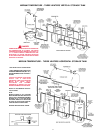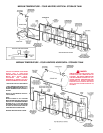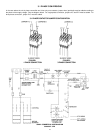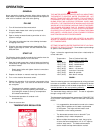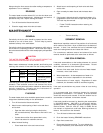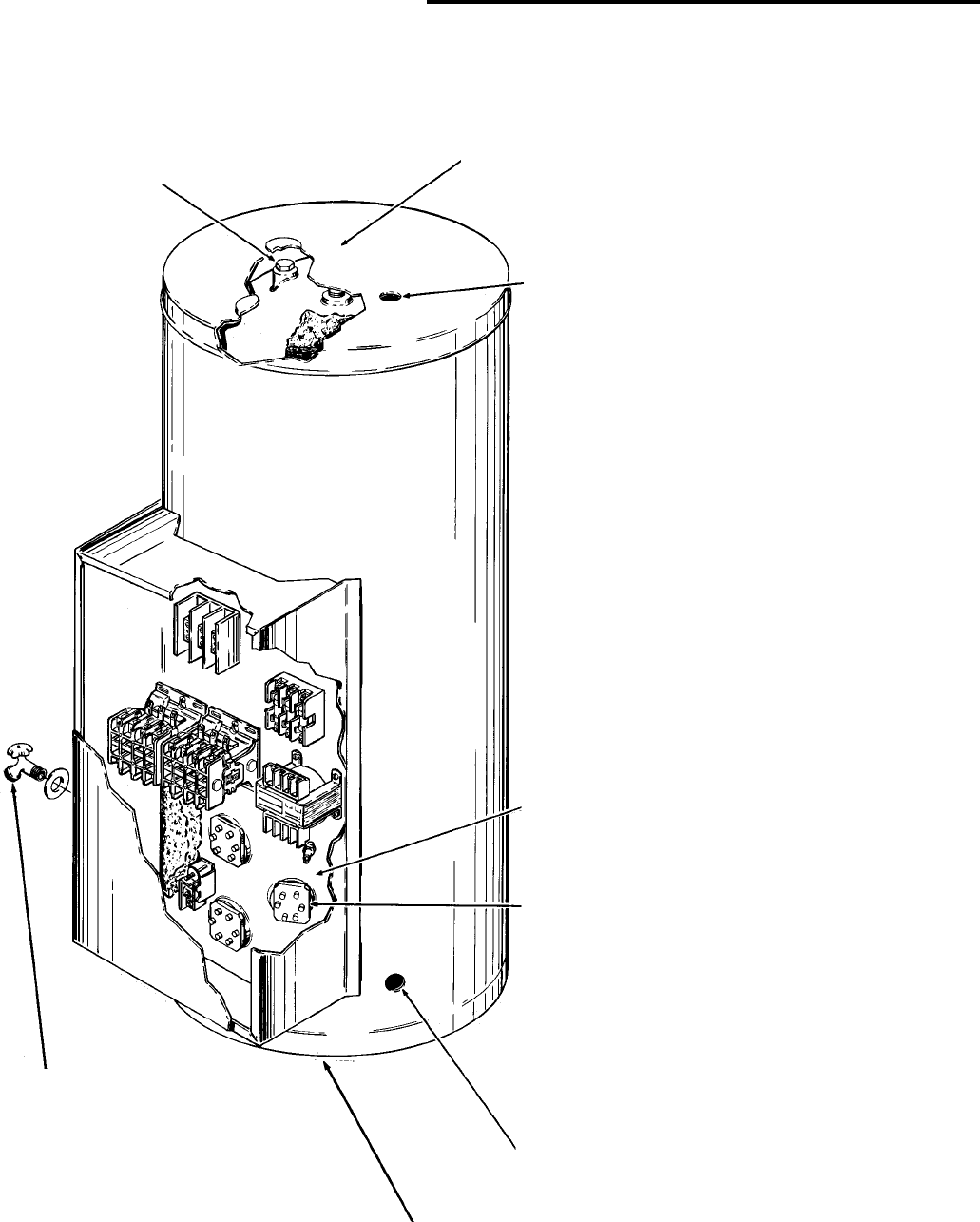
22
LEAKAGE CHECKPOINTS
INSTRUCTIONS: USE THIS ILLUSTRATION AS A GUIDE WHEN CHECKING FOR SOURCES OF WATER LEAKAGE.
YOU OR YOUR DEALER MAY BE ABLE TO CORRECT WHAT APPEARS TO BE A PROBLEM.
Water on side of the tank may be condensation due
to the panel or insulation not being in place.
Relief valve operation and leakage may be due to
water expansion during heating cycle or foreign
material on seat of valve. If the valve is not piped to
an open drain the released water could be mistaken
for a leaking heater. To check where threaded
portion enters tank, insert Q-tip or similar absorbent
material between jacket opening and valve to swab
spud area. Remove valve* if leak is indicated and
repair with pipe joint compound.
Water leaks at the elements may be due to:
1. Defective element which leaks at terminals or
through flange. Replace element*.
2. Loose element/gasket leak:
Flange type: Tighten screws with wrench. If leak
continues remove element* and discard gasket.
Clean gasket seating areas and reinstall element
with new gasket.
NOTE: Part No. 5288 scale cleaning replacement
screws available where threads have become
rusted or damaged, preventing tightening.
Condensation and dripping may appear on pipes
when cold water temperature is low. Pipe fitting may
be leaking.
All water which appears at the heater bottom or on the surrounding
floor may be caused by condensation, loose connections or relief
valve operation and leakage. Do not replace the heater until a full
inspection of all potential leak points is made and corrective steps
taken to stop the leak. Leakage from other appliances, water
lines or ground seepage should also be suspected until proven
otherwise.
Where possible, remove or lift top cover to examine
threads of fittings installed into tank for evidence of
leakage. Correct fitting leaks as necessary.
Drain valve leakage could be from the valve
itself. Either correct the problem or replace the
valve.* To check for leakage where threaded
portion enters tank, insert Q-tip or similar
absorbent material between jacket opening
and valve to swab spud area. Remove valve*
if leak is indicated and repair with pipe joint
compound.
*Contact your dealer as it is necessary to shut
off electricity and drain tank to perform
procedure.
ANODE





